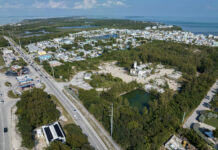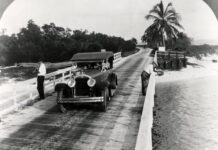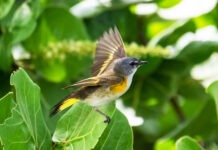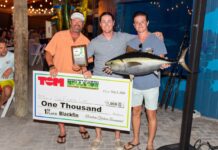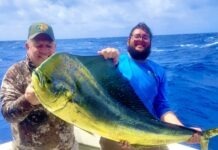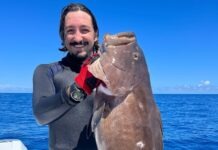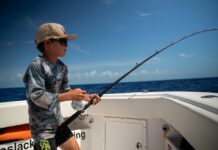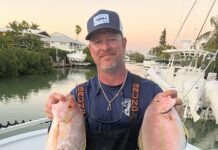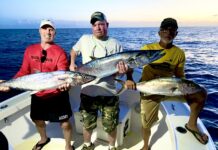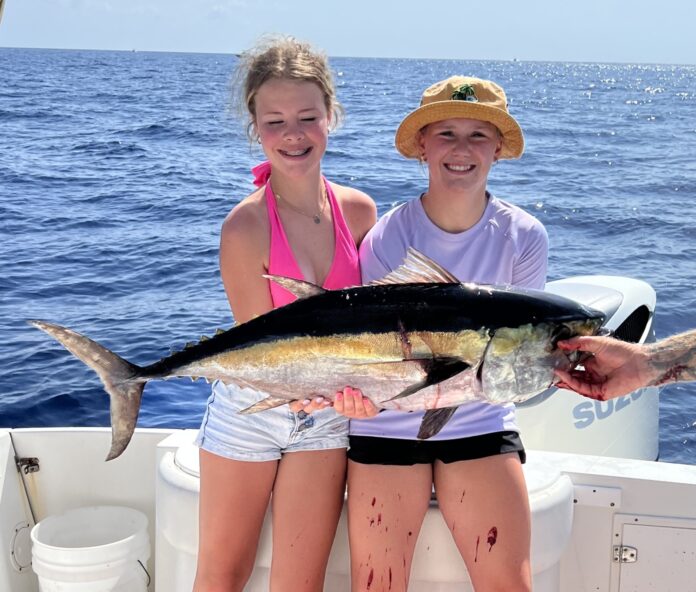
I find most people who come to the Keys in the summer are looking to fish offshore. It is “mahi season,” after all. That, coupled with the fact that sitting on the anchor means just baking in the heat, means a nice ride out to the blue water sounds pretty good. The current offshore (roughly 600 feet of water and out) has been absolutely rolling for the past two weeks, around 4 mph, so I haven’t been doing much deep dropping. So … let’s talk run, troll, and pitch.
Here are a few tips for running offshore in search or dolphin (mahi):
Get everyone involved and looking. It’s easy to miss something, especially at high speed. Obviously, working birds, weed lines and floaters are what you want to find.
If you find a small, unorganized trickle of a weed line, turn and follow it for a while. It might turn into something better, and you could stumble upon that day-saving floater.
Stay in the zone. If you find a few packs of fish, spend more time in that area. It doesn’t necessarily get better as you go farther out.
When you find a set of birds that are working over fish, try to figure if they are moving in a certain direction and head them off. I troll two flat lines with smaller lures on 20- to 30-pound tackle.
I see a lot of visitors out here with really heavy tackle, and I wonder what they’re targeting. Keep in mind, this isn’t Guatemala or Cabo – there are no yellowfin tuna, very few marlin, and your average mahi right now is less than 5 pounds. Big fish eat small lures too.
The goal is to hook one fish and get the school to follow. Once you hook one, keep the first fish in the water a good ways behind the boat and stay at a steady idle moving forward. The rest should follow. Use small live baits and cut baits on 30- and 40-pound leader, and try to pick out the bigger ones.
Also, please keep a de-hooker on board. A small mahi brought on board, grabbed, squeezed, dropped on the deck and then released is a dead fish. The idea behind size limits is to not kill the babies. Slide the de-hooker down to the hook, pull the line down and the dehooker and the fish up, shake and twist, and the fish is released safely.
I usually start off with two different colors of lures and switch one out if one seems to be working better than the other. I also see a lot of visitors trolling super fast out there. For tuna you only need to go 4 to 5 knots, and 5 to 6 for mahi. Check your boat’s tachometer and speed somewhere with no current so you know what rpm you need to find the sweet spot.
If I spot a floater a good distance away, I often won’t troll by it. I’ll slow down and creep up to it very slowly and quietly, so as not to spook a big wary fish that might be there, and start pitching baits.
As far as trolling at any of the tuna humps goes, again, slow down. You don’t need to be throwing a rooster tail! Smaller is also better here with lures – elephants eat peanuts, after all. I also try to employ different styles and colors to see what’s turning the fish on on that particular day. If you’re new to this, try to pay attention to what the locals are doing. If 10 boats are trolling west, don’t cut across traffic going north. You want to troll into the current (west or southwest) with traffic, and then make a really big loop back around in either direction. Oftentimes you can get plenty of troll bites way up current from the actual hump.
Tight lines!








